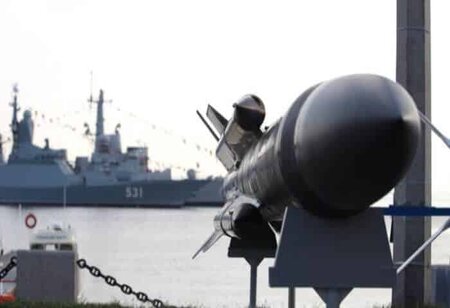Chinese Breakthrough: Revolutionary 'Smart Shell' Redefines Kinetic Energy Weapon
By Consultants Review Team
 Chinese naval researchers have reportedly created a cutting-edge "smart shell" for kinetic energy weapons, potentially transforming military tactics. Launched by a powerful electromagnetic gun, the projectile attains an impressive Mach 7 velocity. Continuous guidance from the BeiDou satellite system enables it to dynamically adjust its trajectory, maintaining a trajectory deviation of less than 15 meters until impact. While its precision may not yet be refined enough for smaller, mobile targets like tanks, it proves effective against larger stationary targets such as warships or ports, according to a South China Morning Post report.
Chinese naval researchers have reportedly created a cutting-edge "smart shell" for kinetic energy weapons, potentially transforming military tactics. Launched by a powerful electromagnetic gun, the projectile attains an impressive Mach 7 velocity. Continuous guidance from the BeiDou satellite system enables it to dynamically adjust its trajectory, maintaining a trajectory deviation of less than 15 meters until impact. While its precision may not yet be refined enough for smaller, mobile targets like tanks, it proves effective against larger stationary targets such as warships or ports, according to a South China Morning Post report.
The concept of this "dream shell" was initially conceived by the US Navy in 2012, envisioning a projectile propelled by electromagnetic rail or coil guns, traveling at Mach 5 speeds, and guided by GPS signals. However, by 2021, the US had abandoned its electromagnetic gun program, leaving the GPS-guided shell project in limbo.
In contrast, the Chinese team, led by Feng Junhong from the National Key Laboratory of Electromagnetic Energy at the Naval University of Engineering, claims significant progress without external support. Their research, detailed in the Journal of Naval University of Engineering, addresses challenges posed by electromagnetic launch systems, focusing on cost-effective, long-range, and precise strikes.
To overcome risks to sensitive electronic components, Feng's team introduced an innovative antenna design capable of withstanding electromagnetic interference while accurately receiving signals from the BeiDou military frequency band. They also addressed the intense physical forces and heat during flight by employing a cost-effective aerogel as a thermal barrier and designing a robust internal structure for the BeiDou signal receiver.
Additionally, the team developed a simple yet effective algorithm to ensure consistent satellite communication, accommodating the erratic movements of shells in flight. While the actual combat effectiveness remains uncertain, these advancements indicate a potential paradigm shift in military power dynamics, challenging the conventional dominance of Western military technology.




